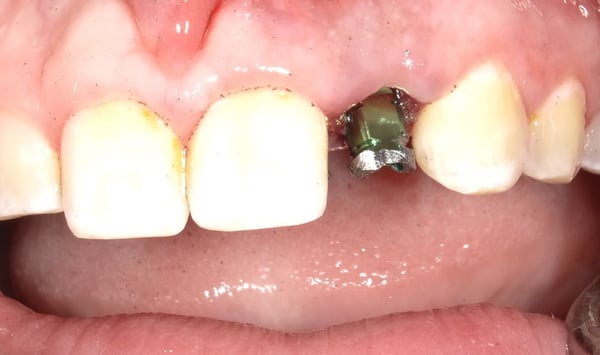What is the current "Industry Standard" regarding guided implant surgery? I have been placing implants for nearly 20 years now and completed my perio training in a joint environment with prosth residents.At the time of my training we were required to fabricate analog style static guides for all of our cases, and after a while the three dimensional aspects of implant surgery sort of became second nature. I have many issues with the current methods being used to fabricate guides as it is all digital and I believe that it is contributing to more people performing "Guided Surgery" without understanding the principals of surgery.
It could just be me but I have observed a lot of really bad implant cases in which the surgeon/guide jockey claims to have done nothing wrong because that is where the guide directed them. For those routinely using guides are you actually doing implant surgery or are you just jockeying a plastic guide? While this post may sound a bit cynical I am truly interested in your input as I do not believe that teaching novice providers to utilize digitally fabricated guides is good for the future of the profession...

doctorbergdds comments:
Hi, guided surgery is not a magic any case solving thing... I always tell my students that if you can´t do it free hand.... The systema allows you some liberties but that is it. I use Paltop Surgery and it is great but it won´t make you a good surgeon if you are not one to start with. Just my 2 cents
drcliff comments:
Hi guys… basic surgical and implant knowledge is a must for placing implants. Bone quality, bone height, width, medical histories, and so much more are a must for a success. I fabricate my own guides, a long learning curve and many hours perfecting and testing my fabrication technique. Implant surgery has many subsets of understanding that must be learned and mastered. The implant placement is the easiest part if you have all the concerns considered and planning done correctly. I personally used a few guide companies back in the day and they were not accurate…. So I did my own journey with tons of CE, made many lab tech friends and critiqued many techniques to fabricate my own guides. That process taught me a wealth of knowledge that has benefited me today to build accurate and trustful guides for myself and associate. So with that said, you are still responsible for your surgeries and their success, so if you aren’t trained and relying on outside companies to digitally place and fabricate your guides…. You better be flapping and checking where these implants are going or one day one it’s going to catch-up with you legally.
ajaykashi comments:
Guided surgery is only as good as the surgeon that understands how the guide can be utilized. If the guide does not work at the time of surgery can the clinician still execute the work to clinical levels of acceptability? In my opinion surgical guides are being overmarketed and oversold onto novice as well as other clinicians with limited surgical experience and are too often leading to undesirable clinical outcomes due to poor surgical techniques. A good surgeon/clinician should be able to execute surgical implant placement for majority of the cases without a surgical guide. I will agree however that surgical guides do have their place in some instances where precise implant angulation and depth determines the final prosthesis position. In all other cases I believe that surgical guides are unnecessary in the hands of a good surgeon.
Ajay Kashi, DDS, PhD
